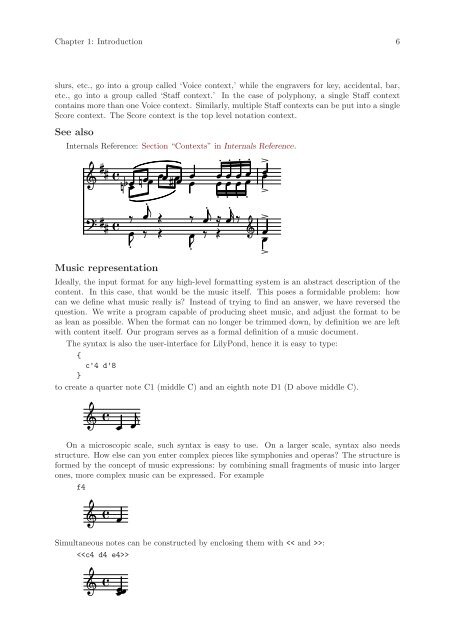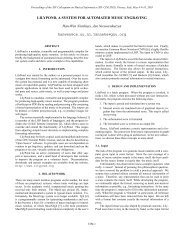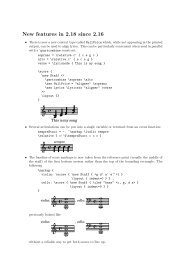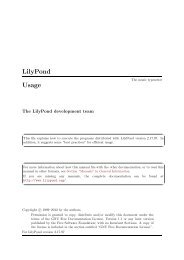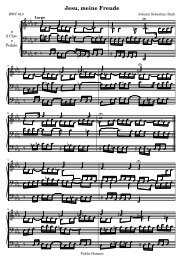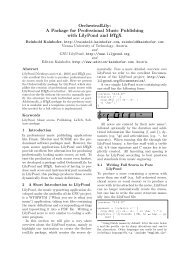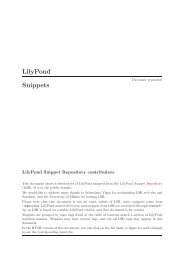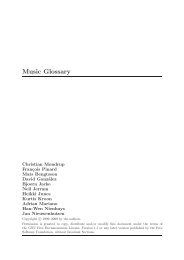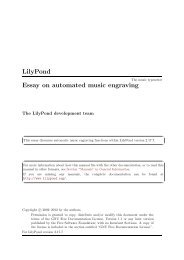You also want an ePaper? Increase the reach of your titles
YUMPU automatically turns print PDFs into web optimized ePapers that Google loves.
Chapter 1: Introduction 6<br />
slurs, etc., go into a group called ‘Voice context,’ while the engravers for key, accidental, bar,<br />
etc., go into a group called ‘Staff context.’ In the case of polyphony, a single Staff context<br />
contains more than one Voice context. Similarly, multiple Staff contexts can be put into a single<br />
Score context. The Score context is the top level notation context.<br />
See also<br />
Internals Reference: Section “Contexts” in Internals Reference.<br />
�<br />
� ��<br />
�� �<br />
�<br />
�� � �<br />
�<br />
�<br />
��<br />
���<br />
�<br />
� �<br />
�<br />
Music representation<br />
��<br />
�<br />
�<br />
���<br />
�<br />
�<br />
�<br />
�<br />
��<br />
� ��<br />
�<br />
�<br />
�<br />
�<br />
�<br />
�<br />
�<br />
�<br />
�<br />
� �<br />
� � �<br />
� �<br />
� �<br />
� �<br />
�<br />
�<br />
�<br />
�<br />
Ideally, the input format for any high-level formatting system is an abstract description of the<br />
content. In this case, that would be the music itself. This poses a formidable problem: how<br />
can we define what music really is? Instead of trying to find an answer, we have reversed the<br />
question. We write a program capable of producing sheet music, and adjust the format to be<br />
as lean as possible. When the format can no longer be trimmed down, by definition we are left<br />
with content itself. Our program serves as a formal definition of a music document.<br />
The syntax is also the user-interface for <strong>LilyPond</strong>, hence it is easy to type:<br />
{<br />
c'4 d'8<br />
}<br />
to create a quarter note C1 (middle C) and an eighth note D1 (D above middle C).<br />
�<br />
�<br />
�<br />
�<br />
�<br />
On a microscopic scale, such syntax is easy to use. On a larger scale, syntax also needs<br />
structure. How else can you enter complex pieces like symphonies and operas? The structure is<br />
formed by the concept of music expressions: by combining small fragments of music into larger<br />
ones, more complex music can be expressed. For example<br />
f4<br />
�<br />
�<br />
�<br />
Simultaneous notes can be constructed by enclosing them with >:<br />
<br />
�<br />
� ��<br />
�<br />
�<br />
�� �<br />
�<br />
�<br />
�<br />
�


